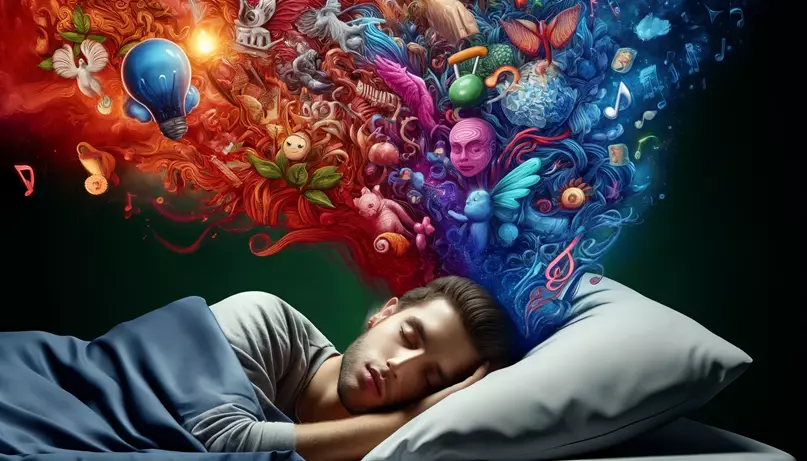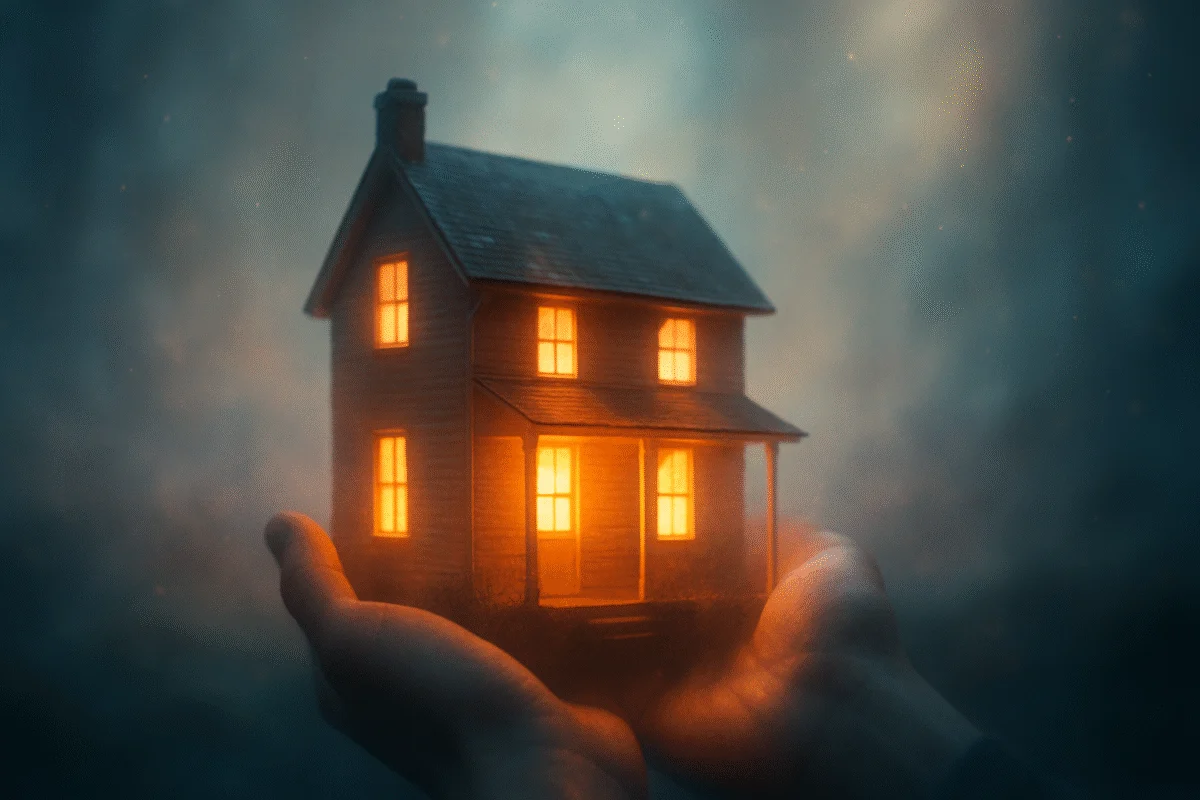Dreams aren’t just random brain sparks that happen when you’re catching Z’s. They can be a treasure trove of inspo for artists and writers looking to level up their creative game.
- 1. Dream Journal Hustle
- 2. Boss Your Dreams: Lucid Dreaming
- 3. Decode the Weirdness: Symbol Interpretation
- 4. Creative Problem-Solving in Sleep
- 5. Dream Characters as Muses
- 6. Setting the Scene for Dream Magic
- 7. Emotional Resonance: Feel Your Dreams
- 8. Tech Tools for Dream Tracking
- 9. Turn Nightmares into Narratives
- 10. Dream Sharing: Expand Your Horizons
- 11. Dream Incubation for Creative Solutions
- 12. Mind Mapping Dream Insights
- 13. Inspiration from Recurring Dreams
- 14. Restful Environment for Richer Dreams
- 15. Translate Dream Emotions into Art
- 16. Harness the Power of Nighttime Snacks
- 17. Explore Historical Dream Theories
- 18. Use Music as a Dream Enhancer
- 19. Dream Interpretation Workshops
- 20. Regular Dream Check-Ins
- Conclusion
- FAQ
Think of your dream state as a VIP backstage pass to the most exclusive, wacky ideas your brain can conjure up. In this world, logic is out, and imagination runs wild, just what the creative doc ordered.
Ever wonder why sometimes your best ideas pop up right after you wake up from a vivid dream? That’s your brain doing some heavy lifting while you’re off in la-la land.
According to dream studies, engaging with our dreams can supercharge our creativity, offering fresh perspectives that are sometimes blocked by our waking, rational minds
And hey, it’s not just about getting wacky ideas. It’s about harnessing them to create something truly unique.
Below, we’ll dive into 20 hot tips to help you tap into that dreamy goldmine, boosting your creative output with some serious flair. Let’s get this dream party started!
1. Dream Journal Hustle
Start vibing with your dreams by keeping a dream journal. As soon as you wake up, grab that notebook by your bed and jot down everything you can remember, no matter how bizarre or disjointed it seems.
This isn’t just about remembering your dreams, it’s about spotting patterns, symbols, or even recurring characters that could inspire your next big project. Plus, revisiting these notes can spark ideas when you’re feeling creatively stuck.
Like, imagine finding a sketch of a trippy landscape you dreamed up last week and turning it into your next masterpiece.
2. Boss Your Dreams: Lucid Dreaming
Get ready to take the driver’s seat in your dream world. Lucid dreaming is where you realize you’re dreaming while still in dreamland, giving you the power to control the plot.
This can be a goldmine for creatives. Picture this: you’re dreaming about a mesmerizing alien world. Once you go lucid, you can explore it, tweak it, and use it as the setting for your next sci-fi novel or game design.
It’s like having a VR studio in your head! Tools like dream journaling and reality checks throughout the day can up your chances of going lucid. Sweet, right?
3. Decode the Weirdness: Symbol Interpretation
Dreams can be total riddles, but cracking them can unleash some serious creative juice. Symbols in dreams, like a crumbling house or a flying car, can represent feelings or ideas that you haven’t fully acknowledged in your waking life.
Dive into what these symbols could mean for you personally or culturally, and use those insights to add depth to your work. Maybe that flying car isn’t just cool, it could symbolize your desire to escape and explore new horizons in your storytelling or art.
4. Creative Problem-Solving in Sleep
Ever hit a creative block so bad it feels like your brain’s frozen? Here’s a hack: think about your creative challenge as you drift off to sleep.
This technique, known as dream incubation, can sometimes result in dreams that offer solutions or new perspectives. It’s like sending a help request to your subconscious, which is pretty dope when it comes through with that genius idea or plot twist you needed.
5. Dream Characters as Muses
The characters you meet in your dreams can be out-of-this-world inspiration for your writing or art. They might be blends of people you know, complete originals, or even mythical creatures.
Next time a dream character catches your vibe, think about their traits, conflicts, and desires. Could they be the protagonist of your next story or the figure in your new painting?
These dream folks can bring authenticity and intrigue to your creative works, making your work stand out in a crowd.
6. Setting the Scene for Dream Magic
Your pre-sleep routine can set the stage for more vivid and memorable dreams. Consider this your own personal dream workshop, dim the lights, play some ambient sounds, or dab a bit of lavender oil on your pillow.
Create a vibe that helps your mind drift into deeper, more imaginative realms. The chiller your environment, the wilder your dreams might get, giving you more material to work with when you’re back in the real world.
Remember, your bedroom is your nightly studio, make it a sanctuary!
7. Emotional Resonance: Feel Your Dreams
Dreams can be emotional rollercoasters, and those vibes can be powerful fuel for creative work. When you wake up from a particularly intense dream, take a moment to jot down not just what happened, but how it made you feel.
Was it fear, joy, sadness, or excitement? Channeling these emotions into your art can help convey more profound messages and connect with your audience on a deeper level.
Plus, it’s therapeutic, turning angst into abstracts or joy into jazz.
8. Tech Tools for Dream Tracking
In the digital age, why not use tech to enhance your dream tracking? Apps and gadgets designed to improve sleep and dream recall are all the rage.
Use a dream-recording app to capture your dreams the moment you wake up, or try a sleep tracker to analyze your sleep patterns and maybe even predict when you’ll dream most vividly. These tools can make sure you never miss a dreamy beat and keep your subconscious sketches organized and accessible.
It’s like having a dream assistant on your phone!
9. Turn Nightmares into Narratives
Even nightmares have their creative perks, they’re raw, intense, and packed with emotion. Instead of trying to forget a scary dream, use it as material for your next horror story, script, or dark artwork.
Translate that fear into a gripping narrative or a haunting painting that captures the essence of the terror. It’s all about flipping the script, turn what scares you into something that enthralls others.
Plus, it’s a boss move to take control of your nightmares and make them work for you.
10. Dream Sharing: Expand Your Horizons
Don’t keep your wild dreams to yourself, share them with friends, family, or a dream group. Bouncing your dream stories around can spark new ideas, offer different interpretations, and even inspire collaborative projects.
It’s like having a brainstorming session, but with your subconscious as the guest star. You might find that what’s just a quirky dream to you could be the missing puzzle piece in someone else’s project.
11. Dream Incubation for Creative Solutions
Before hitting the hay, focus your mind on a specific creative problem or project you’re working on. This technique, known as dream incubation, sets your subconscious to work on it while you snooze.
Plant the seed by thinking deeply about your project as you drift off, your dreaming brain might just cook up the innovative solutions or fresh ideas you’ve been chasing. When you wake up, you could have a eureka moment waiting in your dream journal!
12. Mind Mapping Dream Insights
After jotting down your dreams, take it a step further with mind mapping. This visual approach helps you connect the dots between different dream elements, uncovering deeper meanings and insights.
Use colors, symbols, and branches to link themes, characters, and emotions from your dreams. This can reveal underlying patterns and ideas that could evolve into a complex story, a detailed painting, or an innovative dance routine.
It’s like creating a treasure map where X marks the creative spark.
13. Inspiration from Recurring Dreams
If the same dream keeps popping up, pay attention, your mind is trying to tell you something! Recurring dreams can be particularly rich sources of inspiration, often reflecting deep-seated emotions or unresolved issues.
Delve into these persistent narratives to understand their significance, and use them to fuel your creative endeavors. Perhaps they’re the perfect plot for a mystery novel or a recurring motif for a series of paintings.
Your subconscious could be your most persistent collaborator, nudging you towards your next big idea.
14. Restful Environment for Richer Dreams
Optimize your sleeping environment to encourage more vivid dreams. A restful, distraction-free bedroom can enhance the quality of your sleep and, by extension, your dreams.
Consider factors like comfort, temperature, and light, small tweaks can make a big difference. The more rested you are, the more likely you are to enter REM sleep, the stage most associated with intense dreams.
Think of it as setting the stage for your subconscious mind to perform at its best.
15. Translate Dream Emotions into Art
Dreams can evoke strong emotions, which can be incredibly potent when translated into art. Whether it’s joy, sorrow, fear, or wonder, these feelings can infuse your creative work with authenticity and power.
When you wake up from a dream that’s left a strong emotional imprint, channel that energy directly into your work. Write a poem that captures that fleeting sense of sadness or paint a scene that conveys the surreal joy of your dream world.
It’s about turning those ephemeral feelings into something tangible that others can experience.
16. Harness the Power of Nighttime Snacks
Believe it or not, what you eat before bed can influence your dreams. Foods rich in tryptophan, like turkey and dairy, can promote sleep and potentially increase the vividness of dreams due to their impact on serotonin levels.
Experiment with a small, healthy snack before bed to see if it affects your dream clarity. Remember, this isn’t about heavy meals, but a light nibble, think of it as priming the canvas of your mind.
17. Explore Historical Dream Theories
Dive into historical perspectives on dreams to enrich your creative understanding. Many cultures and famous thinkers have studied dreams, offering insights that could spark new ideas.
For instance, the Surrealists were heavily influenced by Freud’s dream theories, using them to unlock deeper layers of the subconscious in their art. This tip is about connecting with past wisdom to find new creative expressions.
18. Use Music as a Dream Enhancer
Music can profoundly affect our psychological state and even influence the thematic elements of our dreams. Consider playing ambient or instrumental music as you drift off; some artists find that it leads to more thematic, coherent dreaming which can be a wellspring of inspiration.
Whether it’s a haunting melody or a soothing harmony, let music guide your dream narrative to new heights.
19. Dream Interpretation Workshops
Participate in or conduct dream interpretation workshops. These can be fantastic venues for sharing ideas and getting new perspectives on common symbols or themes.
Plus, interacting with fellow dreamers can provide a sense of community and boost your creative confidence. It’s about leveraging collective wisdom to deepen your understanding of dreamscapes and their creative potential.
20. Regular Dream Check-Ins
Make dream exploration a regular part of your creative process. Set aside time each week to review your dream journal and reflect on any recurring patterns or inspiring moments you’ve noted.
This consistent check-in not only helps in building a more substantial connection with your dream world but also ensures that no creative insight slips through the cracks.
By integrating these practices into your routine, you can transform your nightly dreams into a powerful tool for creative expression. Whether through historical exploration, dietary tweaks, or musical experimentation, each tip offers a unique pathway to enhance your artistic journey.
Keep dreaming big and using your nighttime visions to fuel your daytime creations!
Conclusion
Diving deep into the world of dreams isn’t just about catching those z’s, it’s about unlocking a boundless, untapped reservoir of creativity. As we’ve explored, whether you’re an artist sketching the surreal or a writer spinning tales from the ether, your dreams offer a backstage pass to the raw, unfiltered essence of your imagination.
By setting the stage with the right pre-sleep rituals, jotting down those midnight musings, or even munching on the right snack before bed, you’re preparing yourself to harvest the most vivid, inspiring dreamscapes your mind can conjure.
But the real magic happens when you engage actively with these dream-driven creations. Transforming fear into breathtaking art, or fleeting joy into poignant poetry, allows you to navigate your inner universe, turning nebulous night thoughts into tangible, impactful art.
This is where your unique voice can shine, bringing forth works that resonate deeply with others’ emotions and experiences. It’s not just about understanding your dreams, it’s about translating them into expressions that speak to the soul.
So, keep that dream journal handy and let your subconscious be your guide. With each dream, you’re not just dreaming; you’re gathering the building blocks of your next great project.
Embrace this nightly journey with curiosity and openness, and watch as the boundaries between dream and reality blur, crafting a canvas where anything is possible. Here’s to the dreamers, the creators, the artists, and the writers, may your slumbers be ever creative, and your creations ever inspired.
Keep weaving the fantastic and the real, and let your dreams continue to shape your art in ways you never imagined possible.



























